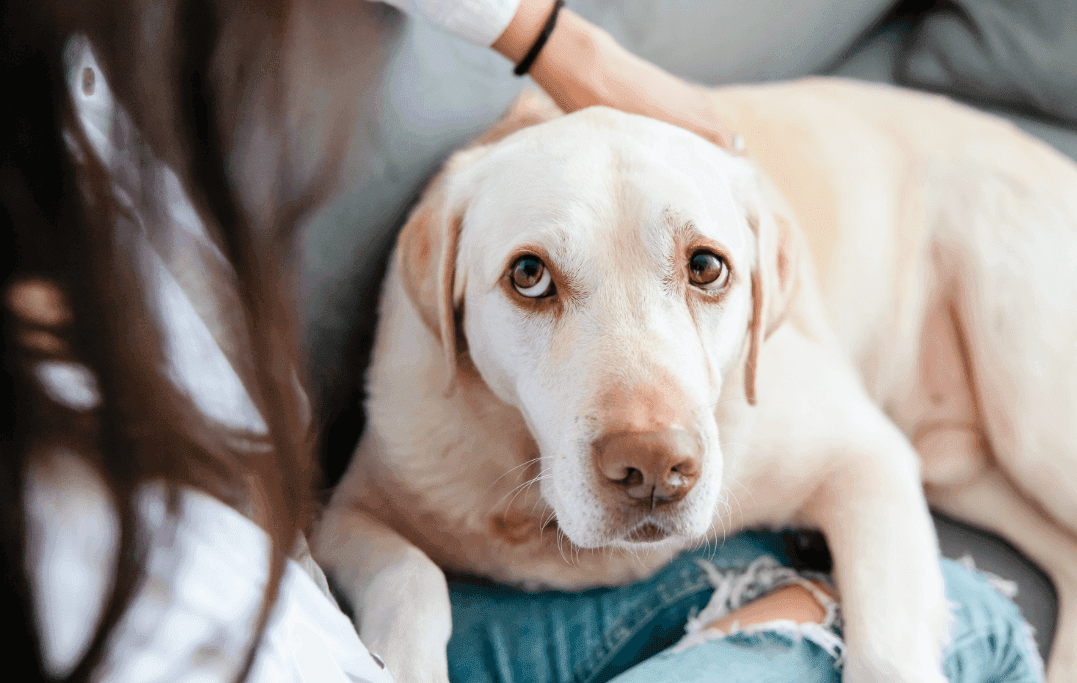
What is Hip Dysplasia
Hip dysplasia is a common hereditary condition where abnormalities occur in the hip joints. These abnormalities include changes to the shape of the hip, ball and socket and the development of osteoarthritis (a common form of arthritis). Changes to the hip joint will begin at a young age as the puppy starts to become more active and will get worse over time. These changes can lead to excessive wear and tear of the joint, causing one or both hip joints to become defective. At this stage, the hip joint(s) may be painful and can have serious effects on the health, behaviour and welfare of the dog.
The severity of hip dysplasia can vary from a poorly shaped hip joint with osteoarthritis (a common form of arthritis) to a very deformed hip joint with advanced and very painful osteoarthritis.
Hip dysplasia most commonly affects stocky, large-breed dogs, research shows that it's caused by a combination of hereditary and environmental factors. A dog’s genetics often play a part in causing the condition, as well as other factors, like diet and exercise.
Written by Dr. Mariella Roberts, Veterinary Surgeon, Animal Trust Vets CIC | Published April 2025 | Review date April 2027 | This advice is for UK pets only and is not a replacement for seeing a vet

Causes of hip dysplasia
Hip dysplasia is primarily caused by genetics due to defects in anatomy and/or a loose joint that can affect dogs which can become lame and eventually crippled due to secondary osteoarthritis. However, other environmental factors can play a role:
Being overweight or obese: extra weight puts increased stress on the muscles and bones and increases levels of inflammation
Injury or high impact during development: when a puppy grows, its bones are quite soft, and any large impacts or injuries may affect the way the bones develop. Injuries, such as falling down the stairs or jumping from too high, could have long-term complications.
Incorrect exercise: exercising a puppy too strenuously in certain ways (e.g. repeatedly chasing ball, jumping or running down the stairs) while their growing may increase their risk of developing hip dysplasia. However, it’s important to remember that not enough exercise and excessive weight can also create risk.
Poor diet: diet may have a role to play in hip dysplasia, so it’s very important that you feed your dog a breed and age-appropriate diet. This can help them grow properly when they’re a puppy and gives them the best nutrients to support their developing skeleton.
Hip dysplasia symptoms in dogs
Hip dysplasia can get worse with age due to wear and tear of joints over time. Some dogs may not initially show any symptoms, but hip dysplasia can be painful, causing a range of different signs that can occur early on, progressing as the disease becomes more severe.
Visible signs of hip dysplasia
Chronic or occasional lameness
Limping with no previous trauma or injury
‘Bunny hopping’ particularly when climbing stairs
Having trouble standing up
Abnormal sitting positions
Having trouble getting on and off furniture, going upstairs, or jumping into cars
When to contact your vet
If you see in your dog any symptoms listed above or if you are simply concerned about it and seek advice.
Diagnosis of hip dysplasia
Physical examination may reveal muscle loss, especially over the hips. Manipulation of the joints may cause pain, and the joint may feel unstable.
The condition is commonly diagnosed with X-ray whilst your pet is unconscious under anaesthetic.
Dog breeds prone to hip dysplasia
German Shepherds, Golden Retrievers, and Labrador Retrievers are commonly affected breeds, but any large and giant-breed dogs are at higher-than-average risk for canine hip dysplasia. Other breeds for which hip dysplasia is a concern: Bulldogs, Mastiffs, Saint Bernards, Bassett Hounds, Bloodhounds, Newfoundlands, Pit Bulls, Chows Chows, and Rottweilers.
Treatment
Early diagnosis of the disease can decrease or even prevent long-term arthritis caused by hip dysplasia in dogs. There are several options for treating canine hip dysplasia, including managing the condition through medications and lifestyle changes or surgical options.
If your dog’s hip dysplasia is mild, any of the following may help manage the condition
Exercise: it’s important that your dog still gets regular exercise, but your vet may suggest tailoring your dog’s exercise, perhaps looking at lower impact exercise, such as swimming or hydrotherapy, or changing the length and frequency of their walks.
Weight loss: if your dog is carrying excess weight, they may suggest a weight reduction plan.
Medication: anti-inflammatories can reduce inflammation in the hip and may help with pain joint supplementation.
If your dog’s hip dysplasia is more severe there are several surgical options with some procedures being better suited for certain dogs than others
Juvenile pubic symphysiodesis (JPS) is performed on puppies less than 5 months old if they are predisposed to developing hip dysplasia or already loose, floppy joints. The growth plate connecting both sides of the pelvis is prematurely sealed, allowing for more rotation to the hips and better alignment as the puppy grows.
Triple/Double pelvic osteotomy (TPO), common in dogs less than 18 months old without evidence of arthritis. The pelvis is cut in multiple places, repositioned, and held together with implants for a better fit.
Femoral head ostectomy (FHO), better suited for smaller dogs, where the femoral head is surgically removed and the joint is allowed to heal, held together by the remaining ligaments and muscles.
Total hip replacement is considered the treatment of choice for dogs suffering from hip dysplasia with arthritis. This procedure allows for re-establishing normal leg function. The hip socket and femur (long leg bone) are drilled out, and a prosthetic ball is inserted into the femur and socket and anchored into the dog’s hip.
How to prevent hip dysplasia in dogs
As hip dysplasia is partly controlled by genetics, no one factor can completely prevent hip dysplasia, but there are several things you can do to lower your dog’s risk.
Most importantly, you should try to keep your dog fit and lean and make sure they get the right type of exercise to maintain muscle mass. Keeping your dog’s weight down and stopping them from becoming overweight will hugely help to reduce strain on their hip joints. During puppyhood, you should take extra care to support your dog’s developing bones and joints. You can do this by feeding them a breed and age-appropriate diet and making sure they get plenty of low-impact and ‘natural’ exercise.
Outlook
The outlook for hip dysplasia and the associated osteoarthritis is generally good.
As mentioned above, many dogs can be managed successfully with non-surgical options treatment involving modification of exercise and weight, with or without the need for anti-inflammatory painkiller drugs.
If non-surgical options are not helping, then surgery needs to be considered, surgery generally has a good result.

